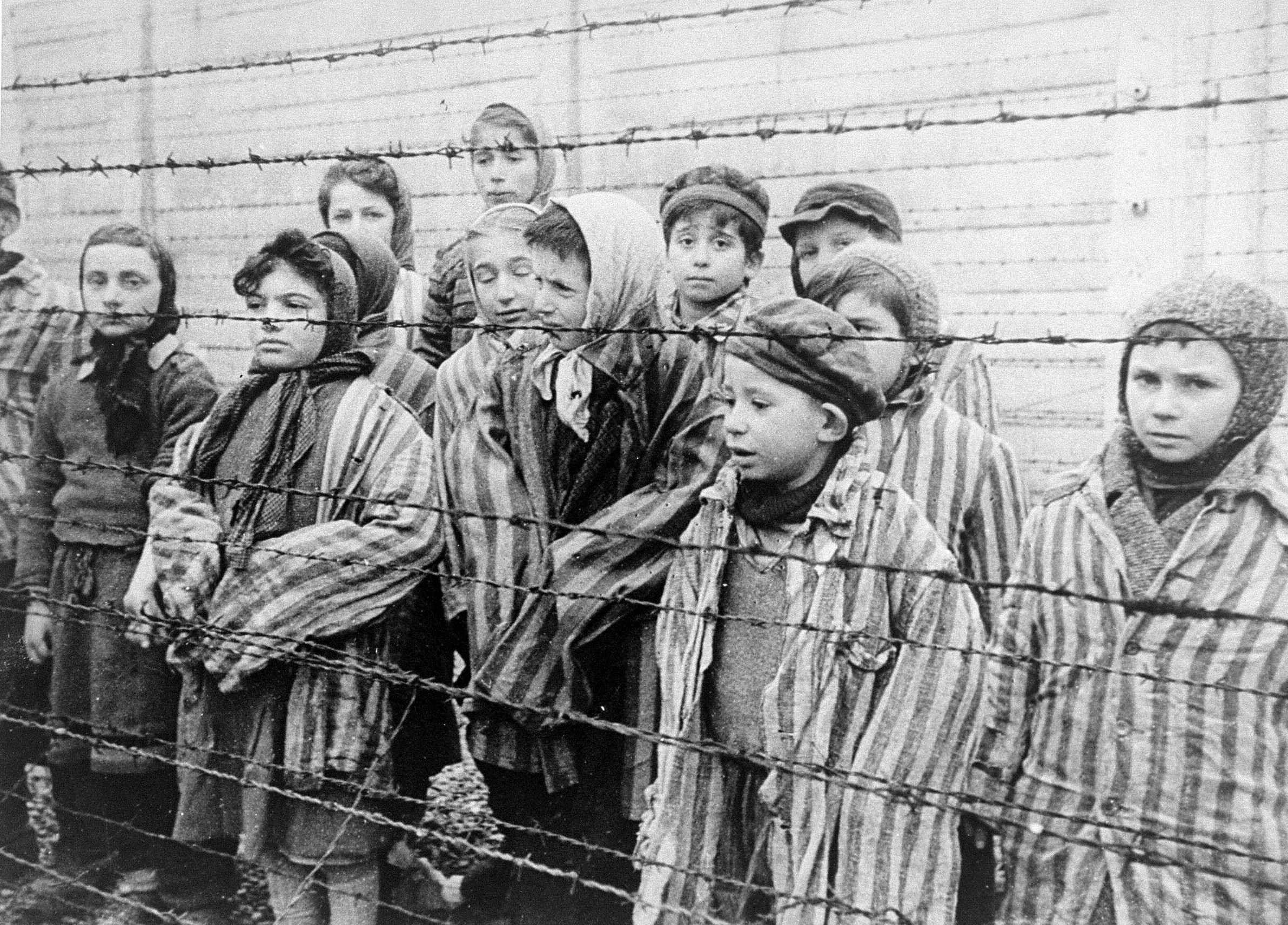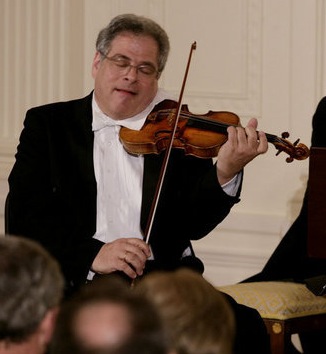Auschwitz Concentration Camp, Poland.
Illustration: VICE.COM
"Schindler's List.".
Composer: John Williams.
Violin solos by Itzhak Perlman (see, below).
Available on YouTube at
Photograph from the Soviet Film of the liberation of Auschwitz, taken by the film unit of
The
First Ukrainian Front.
by Alexander Voronzow and others in his group.
Child survivors of Auschwitz, wearing adult-size prisoner jackets, stand behind a barbed wire fence. Among those pictured are Tomasz Szwarz; Alicja Gruenbaum; Solomon Rozalin; Gita Sztrauss; Wiera Sadler; Marta Wiess; Boro Eksztein; Josef Rozenwaser; Rafael Szlezinger; Gabriel Nejman; Gugiel Appelbaum; Mark Berkowitz (a twin); Pesa Balter; Rut Muszkies (later Webber); Miriam Friedman; and twins Miriam Mozes and Eva Mozes wearing knitted hats.
Date: 1945.
Source: USHMM/Belarusian State Archive of Documentary Film and Photography
Author: Alexander Voronzow and others in his group,
ordered by Mikhael Oschurkow, head of the photography unit.
(Wikimedia Commons)
"Arbeit Macht Frei".
'Work makes you free'. Or ,'Work brings you freedom' depending on the translation.
This was a sign commonly seen throughout Concentration Camps, such as Auschwitz,
often seen on the front gate upon entry. It was essentially psychological torment,
as most prisoners were aware that the only way to earn 'freedom', was to die.
Illustration: FUNNYJUNK.COM
Ed Sullivan congratulates Itzhak Perlman
after a concert at ZOA House in Tel Aviv.
Photo: 28 August 1958.
Source: http://147.237.72.31/topsrch/
Author: PINN HANS
(Wikimedia Commons)
The following Text is from Wikipedia - the free encyclopaedia.
Itzhak Perlman was born in Tel Aviv in 1945, then the British Mandate of Palestine, now Israel. His parents, Chaim and Shoshana Perlman, were natives of Poland and had independently migrated to Palestine in the mid-1930s before they met and later married.
Perlman first became interested in the violin after hearing a classical music performance on the radio. At the age of three, he was denied admission to the Shulamit Conservatory for being too small to hold a violin. He, instead, taught himself how to play the instrument, using a toy fiddle, until he was old enough to study with Rivka Goldgart, at the Shulamit Conservatory, and at the Academy of Music in Tel Aviv, where he gave his first recital at age ten, before moving to The United States to study at The
Juilliard School, with the violin pedagogue, Ivan Galamian, and his assistant, Dorothy DeLay.
Perlman contracted polio at age four. He made a good recovery, learning to walk with crutches. Today, he uses crutches or an electric Amigo scooter for mobility and plays the violin while seated.
Violinist Itzhak Perlman plays during the entertainment portion of The White House State Dinner
in honour of Her Majesty Queen Elizabeth II.
Photo: 7 May 2007.
Source: The White House
Author: Shealah Craighead
(United States Federal Government).
(Wikimedia Commons)










